You are here
Mausoleum of Sheikh Khovendi at-Takhur (Sheikhantaur).
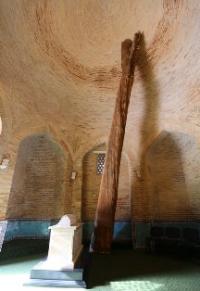
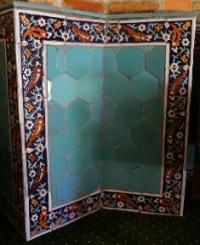
Tours in Tashkent.
“One night a thief got to Khoja. Having clambered the whole house and, finding nothing, the thief took the old chest of drawers and left. Going to the door of his house, he suddenly saw in horror that a sleepy Hodge followed him with a mattress and a blanket.
- Where are you going? - confused thief.
- How where? - Khoja answered perplexedly, “aren't we moving here?”
100 stories about Khoja Nasreddin.
"High spiritual qualities and knowledge in the sciences are consistent with the patience and meekness of a Sufi in relation to the rudeness of the ignorant."
Khoja Ahmed Yasawi. XII century.
Travel to Tashkent.
The Mausoleum of Sheikh Khovendi at-Takhur (Sheikhantaura) is located in the center of modern Tashkent in the square formed by the streets: Alisher Navoi, Abay, Ladzak and Abdulla Qadiri, 183 meters east and slightly south of the mausoleum of Yunus Khan and opposite the mausoleum of Kaldyrgach biy in Almazargach district.
The memorial complex of the saint Sheikh Hovendi Takhur, who lived in the XIVth century, consists of three buildings: the tomb of Hovendi Takhur itself (XVth - XIXth centuries), the tomb of Kaldirgoch-biy (15th century) and a mosque.
The mosque complex was recently built at the expense of the Muslim diaspora in Kazakhstan, whose representatives often come to the grave of Kaldirgoch biy. he complex also houses the mausoleum of Yunus Khan of Mogolistan (1414 - 1487), who was one of the rulers of Tashkent.
In both tombs there is a place for ziarathona (places of worship and prayer) and gurkhona (grave). The grave is crowned with a hemispherical dome. The Sheikhantaur mausoleum was built in the IVth century over the grave of Sheikh Khovendi at-Takhur, who was from the Khoja family - the descendants of the Prophet Muhammad.
He remained in the memory of people as "the most knowledgeable of the most knowledgeable." Inside the mausoleum, next to the tombstone, there is a unique, still preserved, petrified trunk of the sacred Saur. Around the mausoleum there was a whole grove of these conifers planted, according to legend, by Alexander the Great, and which were lifeless already in the XVth century.
Sheikh Khovendi at-Takhur was born in the XIIIth century. He was Seid, which means that he belonged to the Quraish (Quraish) tribe, the native tribe of the Prophet Muhammad. His father, Sheikh Omar, was a direct seventeenth-generation descendant of the second pious caliph Omar ibn al-Khattab, therefore, the men in the family of Sheikh Omar bore the honorary title of Khoja.
Sheikh Omar was an initiated Sufi, a follower of the dervish Hasan Bulgari. He arrived in Tashkent for the sole purpose of spreading Islam. Soon, Sheikh Omar moved to the mountain village of Bogiston, where he spent the rest of his life.
Here Sheikh Khovendi at-Takhur (Sheikhantaur) was born. Young at-Takhur, striving to know perfectly not only religious canons, but also secular sciences, was amazed by the statement of the Turkestan khazrat Khoja Ahmed Yasawi, who lived in the XII century:
“High spiritual qualities and knowledge in sciences are consistent with the patience and meekness of a Sufi in relation to rudeness ignorant ".
Probably this was the reason that the young at-Takhur decided to comprehend the mystical philosophy of Yasavi, and not to become a follower of Bulgar, like his father. Sheikhantaur took initiation among the dervishes of the city of Yassy, where even at that time the worship of the Sufi Sheikh and the founder of the order of Khoja Ahmed Yasawi was widespread.
s befits the Sufi dervishes, at-Takhur does not settle in one place, but wanders through the cities of Maverannahr. In all the cities he visited, the Sheikh won respect for his educational activities, caring for orphans and widows.
Wherever he was, he amazed his contemporaries with his knowledge and wisdom. As one of the founders of the Sufi order of Naqshbandiyya, Sheikh at-Takhur in his teachings called people to patience and meekness, kindness and love.
The rumor about him as a gifted and wise man spreads instantly, and the people call him "the wisest of the wisest". After a long period of travel around Maverannahr, Sheikhantaur arrived in Tashkent, where he remained in the memory of people as "the wisest of the wisest".
The Sheikh died in 1355. In the second half of the XIV century, the commander Tamerlane, who was treating his wounded leg in Tashkent with the help of the healing water of the Zem-Zem spring, built a mausoleum for the Tashkent Sheikh at-Takhur.
The only surviving petrified "saur of Iskander" is located inside the mausoleum. According to legend, the opposition to the Dzungar tribe was led by Tole bi, the ruler of Tashkent, who came from the Kazakh tribe Dulat.
According to popular legend, when countless Dzungar hordes began to approach from the east, people fled in panic, abandoning their homes. And Tole bi did not leave his home. The head of the Dzungars ordered to bring him to court, and asked him if he was really not afraid of anything.
Tole bi replied that he did not want to disassemble his yurt and ruin the swallow's nest with newborn chicks. This confession touched the harsh Dzungar so much that he did not harm either this righteous man or his family.
Since then, Tole bi has become known under the name Kaldirgoch biy - "The Master of the Swallow". Subsequently, Kaldirgoch biy inspired the people to fight the Dzungars, and after the expulsion of the foreigners, he was elected governor of Tashkent.
After his death, he was buried with great honors next to the grave of the holy Sheikh Hovendi Takhur.
Geographic coordinates of the Sheikhantur mausoleum: N41 ° 19'22.00 "E69 ° 15'32.00"
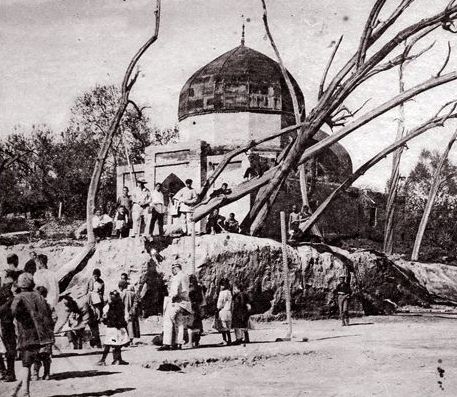
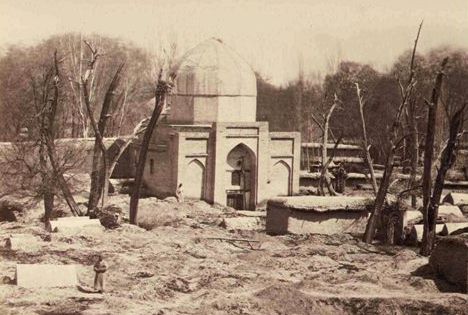
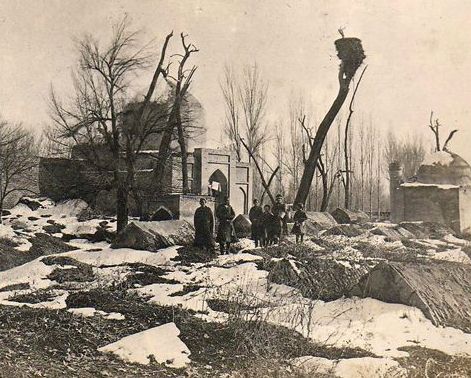
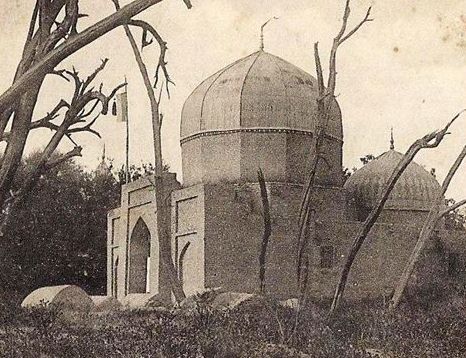
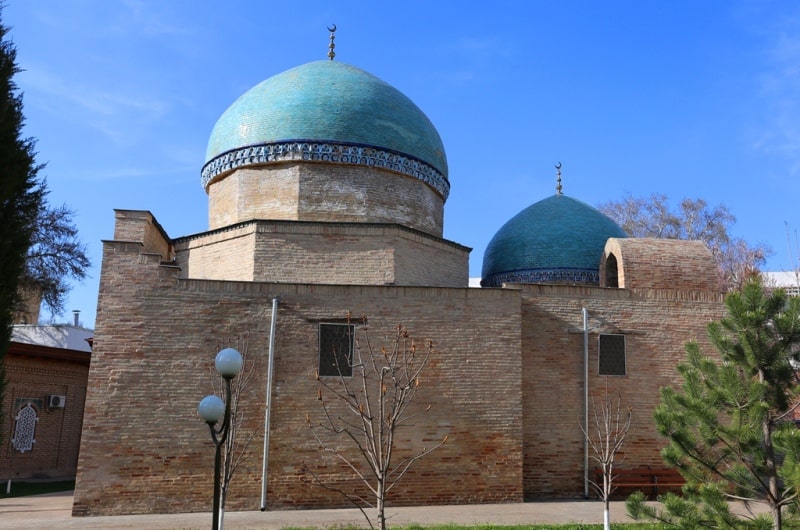
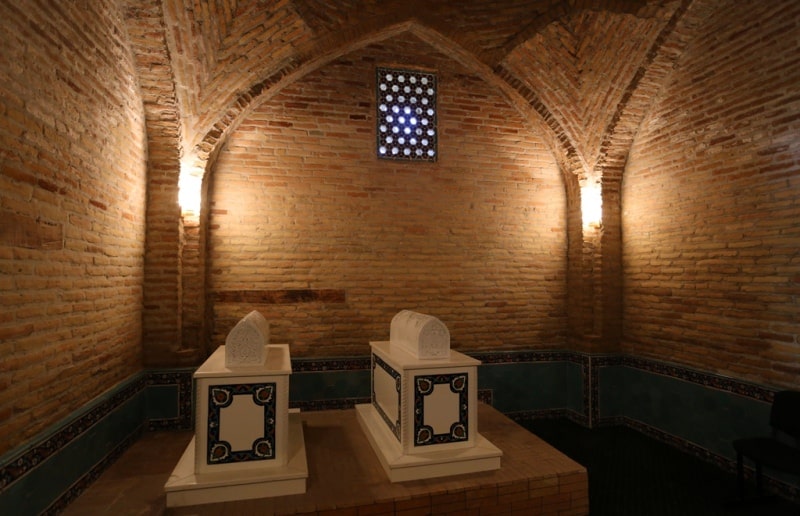
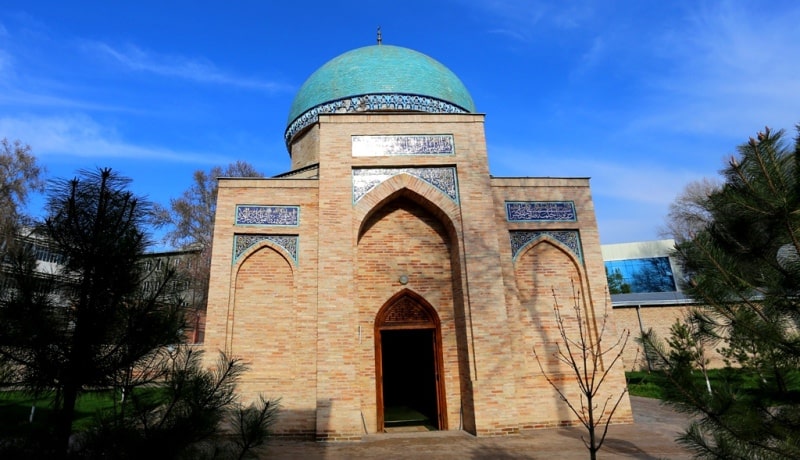
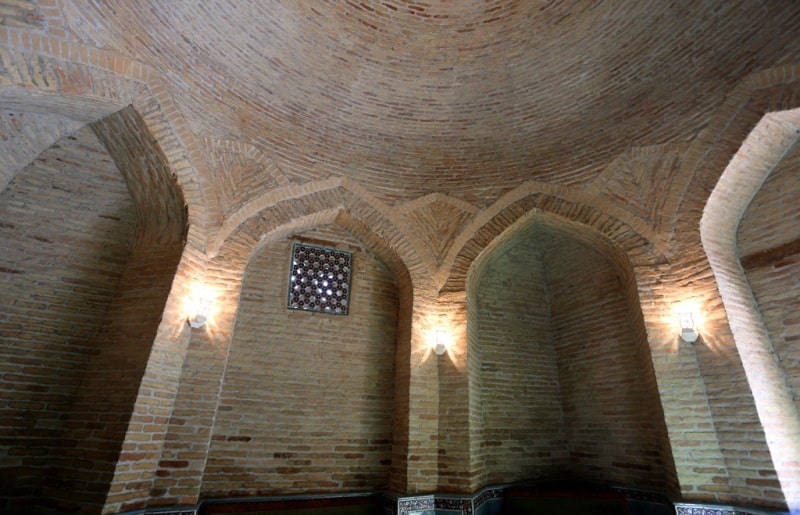
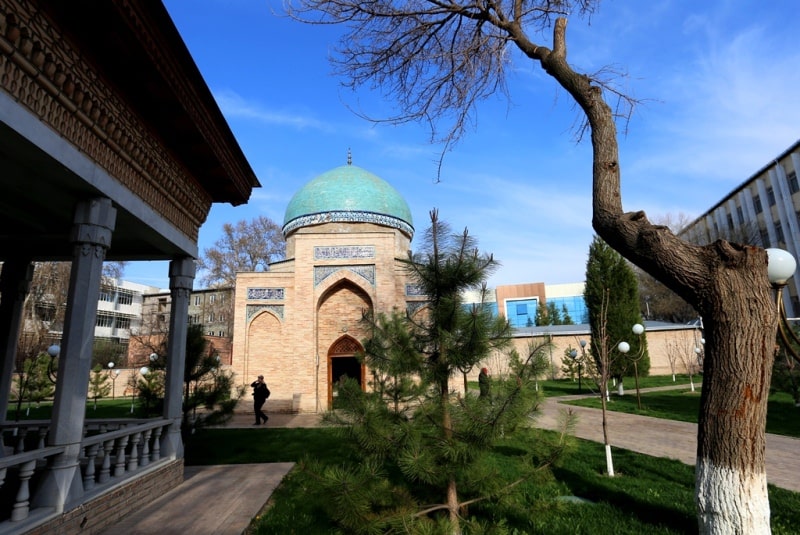
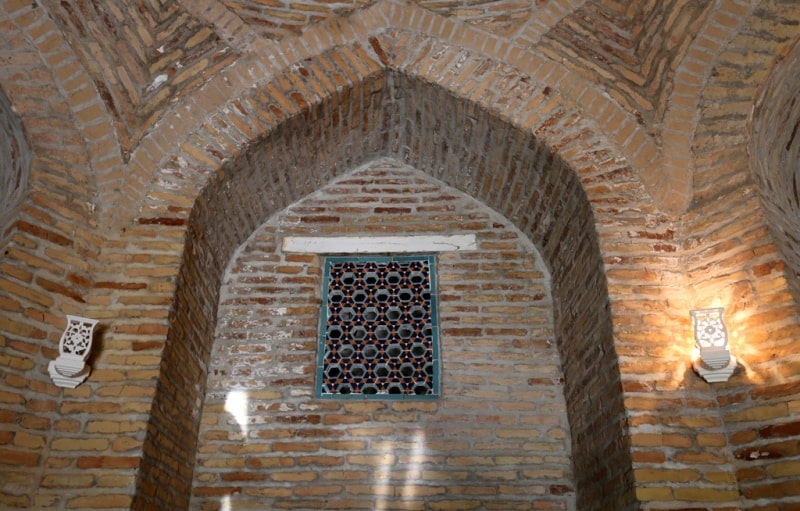
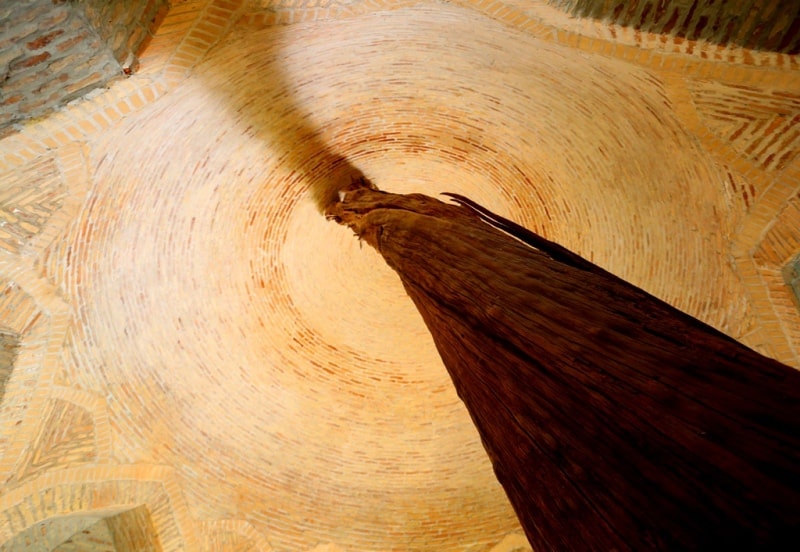
Aurhority:
https://ru.wikipedia.org/wiki/%D0%9C%
Photos by
Alexander Petrov.







